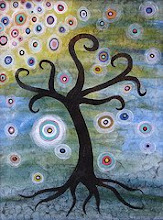Sarah Waters (1999) novel “Affinity” has such a surprising twist. I was stunned at my credulity. Not once suspecting, who the real villain is. Modern Victorian novels don’t usually entice me. This one did: hook, line, and sinker. This is the first of her novels read, a story with a mystery of outrageous artfulness. Bravo, Ms. Waters for no small measure of deception.
Her most recent book "The Night Watch," was influenced by the war years. I've not read that one. When doing the research for this novel, Waters stated: the volume of information about Britain at War is overwhelming. Don’t I know that! I felt likewise, when researching WW2 for the Prym and Prophet story.
Another novel which recently kept me captivated: “A Gathering Light” by Jennifer Donnelly. She maintains the tension and the twists to the end. In many respects a wholesome story and a thriller. When driving to work last week, I listened to Joanna Lumley’s (2005) audio book “No Room for Secrets.” You probably know of her as Patsy, in the television series “Absolutely Fabulous.” She’s been around for as long as I have. What we have in common is Dirk Bogarde in "A Tale of Two Cities." This is the man and the film which gave her the urge to become an actor. The same man I fell in-love with, in his role as Sydney Carton. I saw that film five times until my mother said, “Enough Is Enough!”
I was so aware of and stirred by Bogarde’s understated sensuality. Mulling over this first falling in-love, his persona in the film role represented the rescuer. I hadn’t worked that one out as an adolescent. Every scenario created in my imagination began with rescue: falling from a horse outside the gates of his home or my MG sports car running out of petrol. I had a big range of rescue scenes. Thereafter, we had romantic sensual encounters. Those were quite chaste. Nice girls were not expected to lose their virginity. Not until they married. What’s apparent to me now, I wanted to be rescued from adolescence. That’s such an awkward emotional phase to live through.
Prior to sprouting breasts, with other manifestations all indicating childhood was about to desert me, my fantasy world was already richly creative. I told myself stories. What I most enjoy when doing creative writing, is finding the unknown lurking within. Unveiling the hidden, always gives me a huge buzz.




